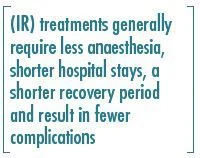HealthManagement, IQ_2012_06_venus
Circulation
When everything is running smoothly, most people don’t give their circulation much thought. But silently and out of sight something impressive is happening.
The heart pumps the equivalent of approximately 7,000 lit - res of blood around the body each day. Blood is first sent along the arteries, delivering oxygen from the lungs to the other organs and tissues. Then it is the job of the veins to convey the de-oxygenated blood from every corner of the body back to the heart, and the cycle starts again.
Veins: A One-Way System
By the time the blood has reached the veins, the pumping force of the heart is not so strongly felt. Furthermore, this part of the circulatory system must do most of its work against the force gravity; this is especially significant in the long veins of the legs.
The position and structure of veins help them to guide the large volumes of blood back up towards the heart.
- Vessel elasticity: vein walls help blood to return in the direction of the heart
- One-way valves: prevent backflow of blood in the wrong direction
- Leg muscle pump: also known as the peripheral heart. As the calf muscles contract, they squeeze the leg veins, helping to push the blood upwards towards the heart
What Can Go Wrong
Venous problems can arise from inappropriate blood clotting (thrombosis) or false connections between blood vessels (malformations). A disturbance in the efficient functioning of the veins can be due to a loss of tone or damage to the vein walls or valves.
Venous insufficiency describes the state when veins do not effectively perform their role of returning the blood to the heart, often due to weakened and leaky valves. Blood pools in the venous system, the veins swell and bulge outwards (varicose veins) and a range of symptoms can follow.
Venous disorders are often connected and do not necessarily occur in isolation (see page 6).
Only a Cosmetic Concern?
Visible veins beneath the skin can be a serious burden for some people, having a notable impact on quality of life and limiting social and recreational activities. But varicose veins are not always merely a cosmetic problem and a range of further symptoms can ensue (see page 6).
The large number of people affected means that overall costs to healthcare systems are high and the wider economy suffers from the associated morbidity.
How IR Can Help
Using modern image guidance, interventional radiologists are able to provide minimally invasive treatment solutions for many venous disorders.
The great strength of interventional radiology (IR) is its ability to take the same imaging techniques that allow accurate diagnosis and use them also to guide treatments. These treatments generally require less anaesthe sia, shorter hospital stays, a shorter recovery period and result in fewer complications.
The highly refined skills of interventional radiologists also enable them to provide elegant solutions to gaining venous access in the clinic, allowing haemodialysis or the rapid delivery of medication and nourishment. This has life-saving consequences for a great many patients.
The Vicious Venous Cycle
CVI and varicose veins (a form of CVI) have slightly different origins, but then follow the same path.



Varicose veins occur most commonly in the legs, which are furthest from the heart and subject to the greatest gravitational strains. But faulty valves also manifest as:
- Varicoceles in men: an enlargement of the vein in the scrotum, which can lead to pain, swelling, or shrinking of the testes
- Pelvic congestion syndrome (PCs) in women: where the veins of the pelvic region become distend ed and painful. This is often related to the strains of pregnancy and labour (see IQ #4 for more information)
Interestingly, women are generally more susceptible to venous problems, primarily because the hormone oestrogen weakens the vein walls.


